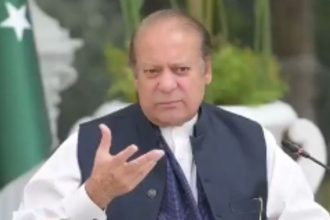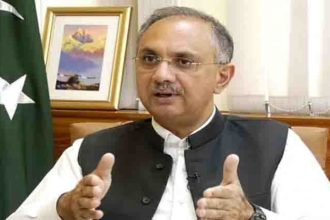State Bank of Pakistan (SBP) Acting Governor Saeed Ahmad has said that some anti state element are spreading counterfeit currency.
Earlier yesterday, addressing to a conference “Currency management: strategies for the future” organised by the SBP said the central bank is taking extreme measure on the matter .
He also urged the media to play its due role by creating awareness of this menace (To the national economy)
He announced that in this connection SBP is in the process of developing a smartphone application that will be widely circulated and would help people in identifying fake money.
He clarified that there are many security features in Pakistani currency that can help differentiate between genuine and fake currency notes. These features are very hard to replicate in counterfeit notes. However, people at large are unaware of these features and the campaign will help them in identifying the genuine currency.
He also said the“SBP is working to introduce a hologram and other security features in Pakistani currency notes, but since it is a costly project, it is yet to be decided on which denomination it will be added.”
“Hologram should be introduced in both the 5,000 and 1,000-rupee denominations and in lower denominations it will be examined.”
To a question, he responded that the government’s domestic borrowing has declined due to increase in remittances, IMF loans and sale of Eurobonds and sukuk. “Hence, the government has reduced its borrowing cost by shifting reliance from local to foreign borrowings.”
Ahmad said that the SBP sees the total transformation of cash processing business from manual to automation in the next five years and would like to see commercial banks aligning their plans with the SBP in this regard.
Without joint action, the desired results to improve the quality of currency notes in circulation will not be achieved.
Ahmad elaborated that the SBP has been making extensive efforts to implement its clean notes policy for the last 10 years but with limited success largely due to lack of automation in cash processing.
“We have thus planned a fast-track automation of currency management function both at the central bank and commercial banks.”
Earlier, SBP’s Deputy Governor Operations Kazi Abdul Maktadir, while elaborating the challenges faced in currency management indicated that despite the emergence of various alternatives to cash-based transaction in Pakistan, hard cash maintains its predominant position.
“We have witnessed a significant surge in currency circulation during the last five years, from 2009 to 2014. Currency in circulation more than doubled from Rs1,224 billion to Rs2,500 billion,” he said.
“Every year, on average, 1.9 billion currency notes of various denominations are printed.” He claimed.





